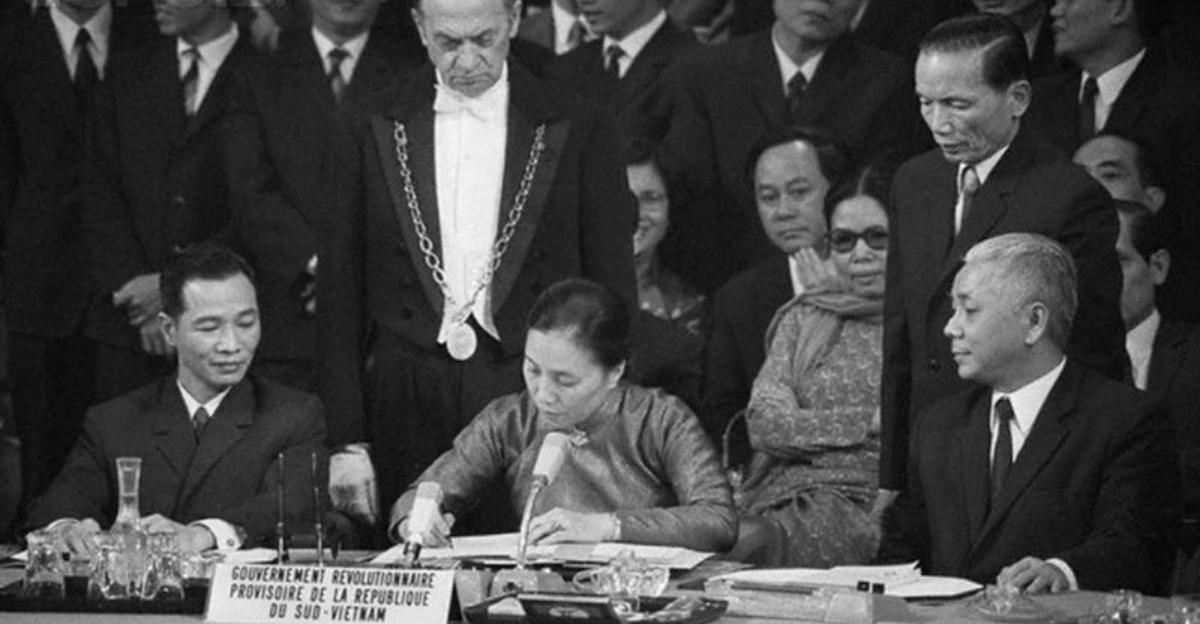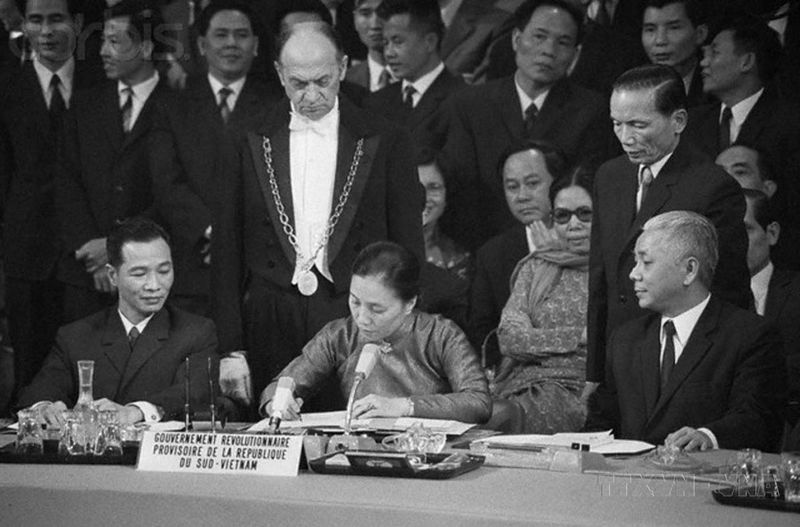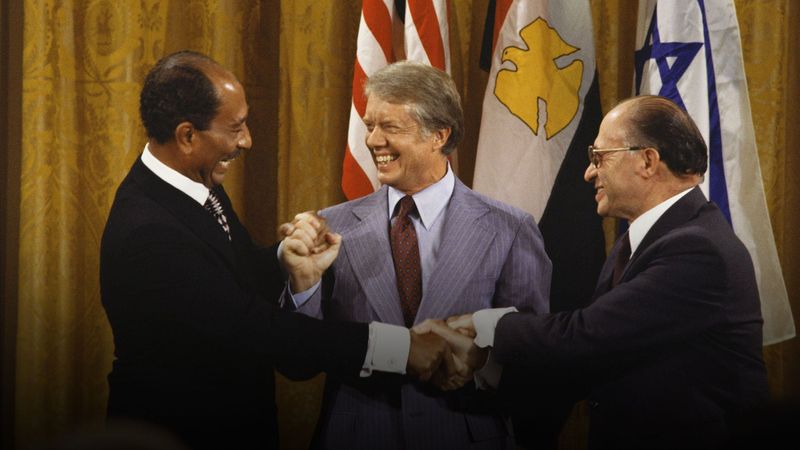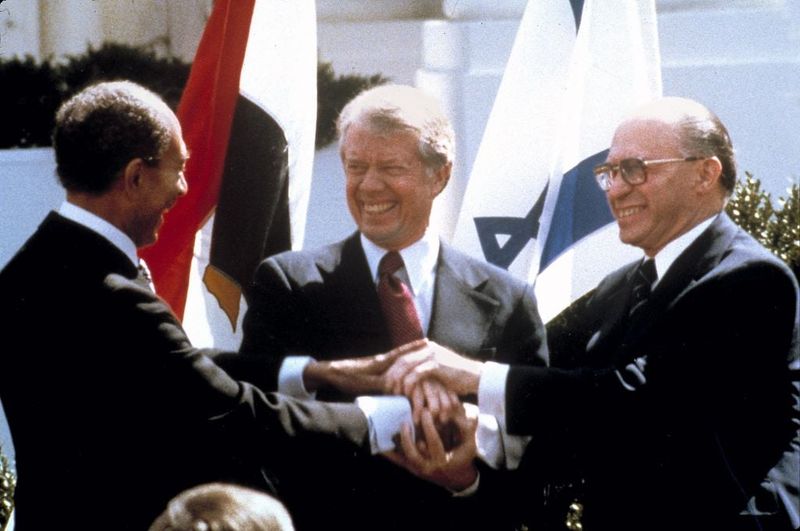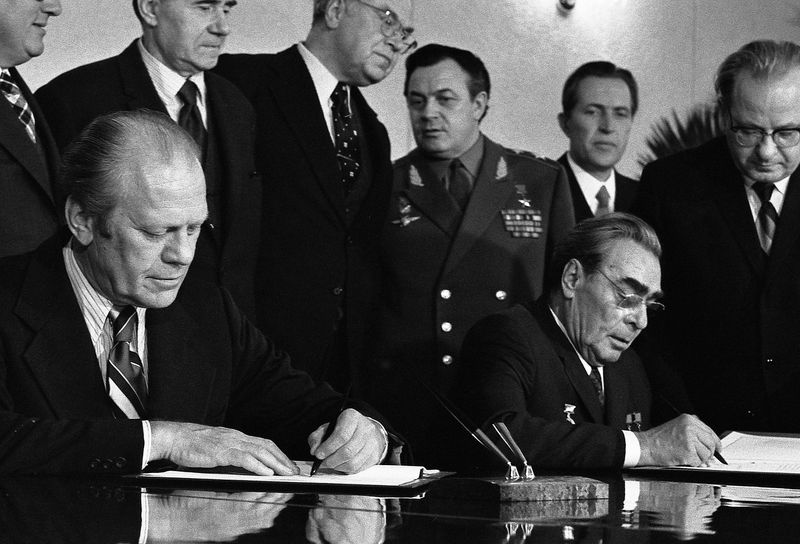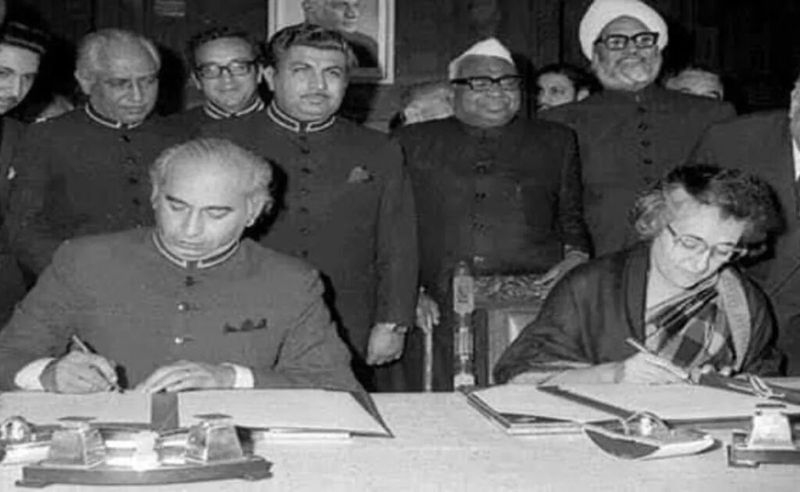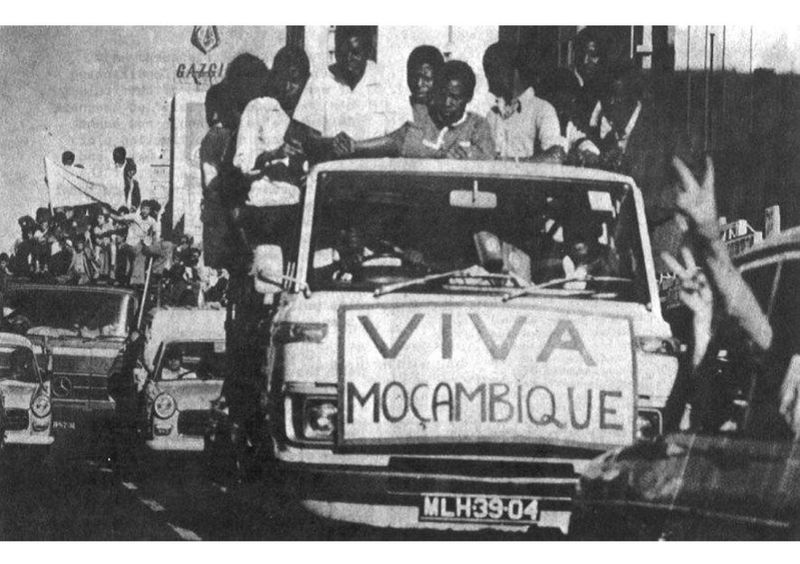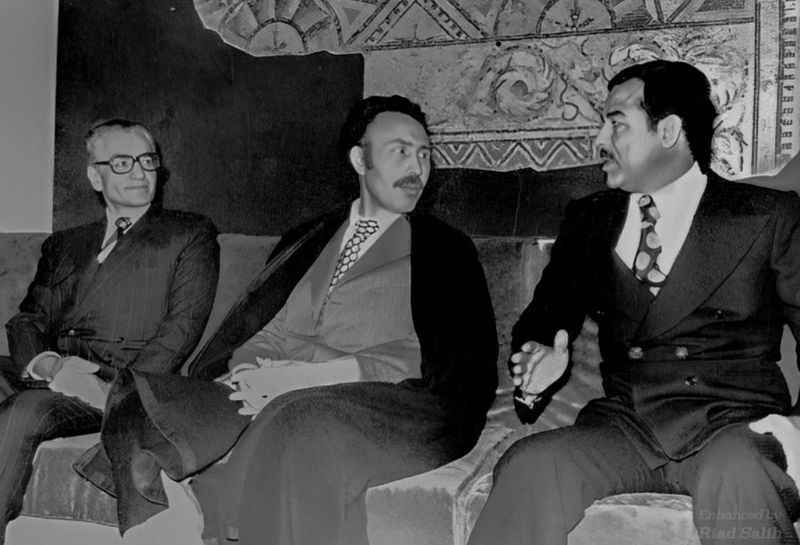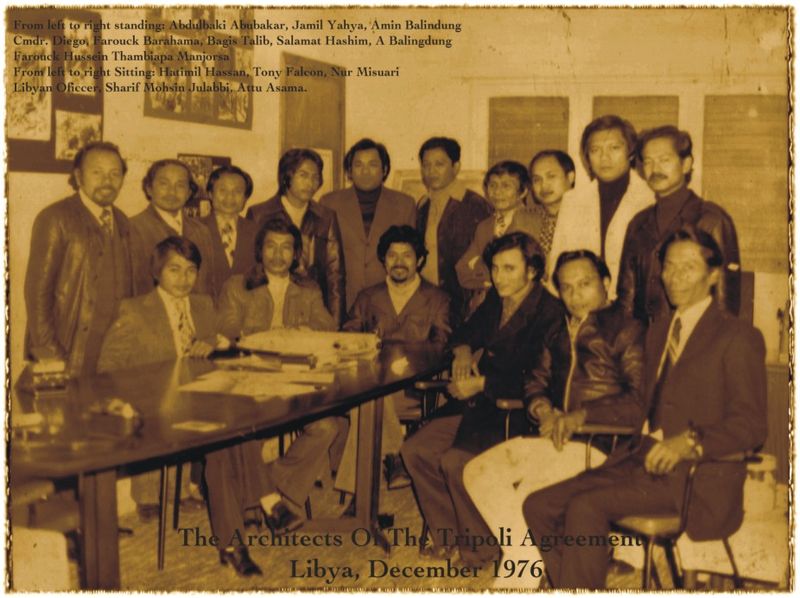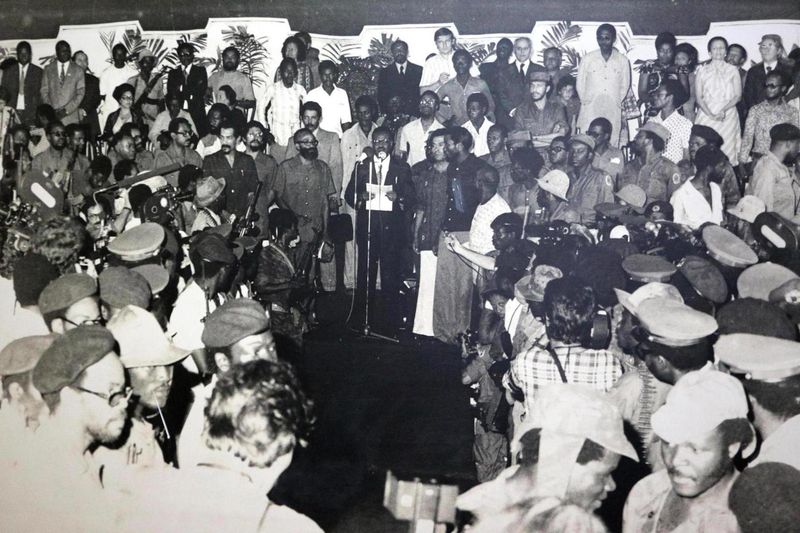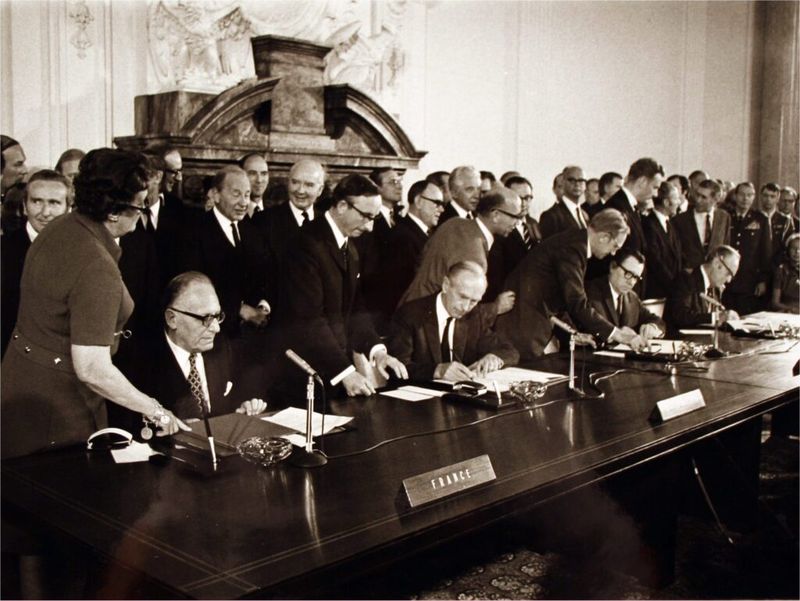The 1970s marked a turning point in global diplomacy, as nations worked tirelessly to resolve conflicts through peaceful negotiations rather than warfare. During this transformative decade, several groundbreaking peace treaties emerged that helped end devastating wars and established frameworks for lasting stability. From the jungles of Vietnam to the deserts of the Middle East, these agreements shaped the modern world we know today. Understanding these historic accords reveals how diplomacy can triumph over conflict when leaders choose cooperation over confrontation.
1. Paris Peace Accords (1973)
Picture a war-weary world watching as diplomats gathered in Paris to end America’s longest conflict. The Paris Peace Accords, signed on January 27, 1973, represented a desperate attempt to bring peace to Vietnam after years of devastating warfare. Four parties came together: the United States, North Vietnam, South Vietnam, and the Provisional Revolutionary Government of South Vietnam.
The agreement promised the withdrawal of all American troops within 60 days and the return of prisoners of war. A ceasefire would take effect immediately across both North and South Vietnam. Unfortunately, the peace proved fragile and short-lived.
Fighting resumed almost immediately after the American withdrawal, ultimately leading to the fall of Saigon in 1975. Despite its failure to create lasting peace, the accords marked America’s official exit from the Vietnam conflict.
2. Camp David Accords (1978)
High in the Maryland mountains, three world leaders changed Middle Eastern history forever. President Jimmy Carter invited Egyptian President Anwar Sadat and Israeli Prime Minister Menachem Begin to the secluded Camp David retreat for what would become 13 days of intense negotiations. The September 17, 1978 agreement broke decades of hostility between Egypt and Israel.
Carter’s patient mediation helped the two leaders find common ground despite their nations’ bitter rivalry. The accords established a framework for peace that addressed both bilateral relations and Palestinian autonomy. Egypt would become the first Arab nation to officially recognize Israel’s right to exist.
This breakthrough paved the way for the formal Egypt-Israel Peace Treaty signed the following year. The agreement fundamentally reshaped Middle Eastern politics and demonstrated that even the most entrenched enemies could find peaceful solutions.
3. Egypt-Israel Peace Treaty (1979)
On the White House lawn, history unfolded as former enemies became partners in peace. The Egypt-Israel Peace Treaty, signed March 26, 1979, transformed the Camp David framework into a binding international agreement. This momentous occasion marked the end of a 31-year state of war between the two nations.
Egypt’s recognition of Israel sent shockwaves throughout the Arab world, leading to Egypt’s temporary expulsion from the Arab League. In exchange, Israel agreed to withdraw completely from the Sinai Peninsula, returning territory captured during the 1967 Six-Day War. The agreement also established diplomatic relations and opened borders for trade and tourism.
President Carter witnessed this historic moment that would earn both Sadat and Begin the Nobel Peace Prize. The treaty has endured for over four decades, proving that bold leadership can create lasting peace even in the world’s most volatile regions.
4. Helsinki Accords (1975)
Thirty-five nations gathered in Finland’s capital to ease Cold War tensions through an unprecedented diplomatic achievement. The Helsinki Accords, signed August 1, 1975, brought together Western democracies, Soviet bloc countries, and neutral nations in a remarkable display of international cooperation. This agreement addressed three crucial areas: security, economic cooperation, and human rights.
The accords recognized existing European borders while establishing principles for peaceful coexistence between East and West. Perhaps most significantly, they included provisions for human rights and fundamental freedoms that would later inspire democratic movements across Eastern Europe. The Soviet Union agreed to these human rights commitments in exchange for Western recognition of post-World War II boundaries.
While not legally binding, the Helsinki Accords created moral obligations that helped reduce Cold War tensions. The agreement laid important groundwork for future arms control negotiations and contributed to the eventual end of the Cold War.
5. Addis Ababa Agreement (1972)
In Ethiopia’s capital, Sudanese leaders finally silenced 17 years of civil war that had torn their nation apart. The Addis Ababa Agreement, signed February 27, 1972, ended the First Sudanese Civil War between the northern government and southern rebels. Emperor Haile Selassie of Ethiopia and the World Council of Churches helped mediate these crucial negotiations.
The agreement granted significant autonomy to Southern Sudan, allowing the region to govern itself while remaining part of a unified Sudan. Southern Sudan received its own regional assembly and executive council, with Arabic and English as official languages. Former rebels were integrated into the national army, and refugees began returning home.
For eleven peaceful years, this agreement held firm and allowed Sudan to focus on development rather than warfare. Sadly, the peace collapsed in 1983 when President Nimeiry violated the accord by imposing Islamic law throughout Sudan, sparking the even more devastating Second Sudanese Civil War.
6. Simla Agreement (1972)
High in the Himalayan foothills, India and Pakistan chose dialogue over continued conflict following their devastating 1971 war. The Simla Agreement, signed July 2, 1972, by Prime Minister Indira Gandhi and President Zulfikar Ali Bhutto, aimed to normalize relations between the nuclear-armed neighbors. This accord emerged from the ashes of war that had created Bangladesh and left both nations exhausted.
The agreement established crucial principles for future relations, including respect for each other’s territorial integrity and sovereignty. Both leaders committed to resolving disputes peacefully through bilateral negotiations rather than force or third-party intervention. The Line of Control in Kashmir was to be respected by both sides.
Most importantly, the agreement led to the return of 93,000 Pakistani prisoners of war held by India. While tensions periodically resurface between these South Asian powers, the Simla Agreement remains the foundation for their diplomatic relationship and continues to influence peace efforts in the region.
7. Lusaka Accord (1974)
In Zambia’s capital, Portuguese colonial rule in Mozambique finally came to an end through peaceful negotiation. The Lusaka Accord, signed September 7, 1974, between Portugal and the Front for the Liberation of Mozambique (FRELIMO), established a clear path to independence for the Southeast African nation. This agreement followed Portugal’s Carnation Revolution, which brought democracy to Portugal and ended its colonial empire.
The accord set June 25, 1975, as Mozambique’s independence date and established a transitional government led by FRELIMO. Portuguese settlers were guaranteed protection and property rights during the transition period. The agreement also addressed the integration of liberation fighters into a new national army.
FRELIMO leader Samora Machel became Mozambique’s first president, leading the nation toward independence after centuries of Portuguese rule. While the transition wasn’t entirely smooth, with many Portuguese settlers fleeing the country, the Lusaka Accord successfully ended the independence war and established Mozambique as a sovereign nation.
8. Algiers Agreement (1975)
Along the disputed Shatt al-Arab waterway, two regional powers chose compromise over conflict in a deal that would ironically plant seeds for future war. The Algiers Agreement, signed March 6, 1975, between Iran’s Shah and Iraq’s Saddam Hussein, temporarily resolved long-standing border disputes between these oil-rich neighbors. Algerian President Houari Boumediene mediated the negotiations that took place during an OPEC summit.
The agreement established the boundary along the deepest channel of the Shatt al-Arab, giving Iran significant navigation rights it had long demanded. In exchange, Iran agreed to stop supporting Kurdish rebels fighting against the Iraqi government. Both nations pledged to respect each other’s territorial integrity and sovereignty.
For five years, this agreement maintained peace between Iran and Iraq, allowing both countries to focus on domestic development. However, the 1979 Iranian Revolution changed everything, and Saddam Hussein eventually abrogated the treaty in 1980, launching the devastating Iran-Iraq War that would last eight bloody years.
9. Tripoli Agreement (1976)
In Libya’s capital, Filipino Muslims finally gained recognition of their struggle for autonomy in the southern Philippines. The Tripoli Agreement, signed December 23, 1976, between the Philippine government and the Moro National Liberation Front (MNLF), promised to end decades of conflict in Mindanao and the Sulu archipelago. Libyan leader Muammar Gaddafi personally mediated these negotiations as part of his support for Muslim causes worldwide.
The agreement established autonomous regions for Muslims in 13 provinces of southern Philippines, covering areas with significant Muslim populations. The MNLF would participate in governing these regions while maintaining their cultural and religious identity. Educational and legal systems would respect Islamic traditions and practices.
Unfortunately, implementation proved more challenging than negotiation, as disagreements arose over which areas would receive autonomy. Fighting resumed sporadically, though the agreement laid important groundwork for future peace processes. The Tripoli Agreement remains a significant milestone in recognizing the rights of Filipino Muslims and their desire for self-governance.
10. Alvor Agreement (1975)
In a Portuguese seaside town, three rival liberation movements temporarily united to birth an independent Angola. The Alvor Agreement, signed January 15, 1975, brought together Portugal with the MPLA, FNLA, and UNITA movements that had fought both colonial rule and each other for over a decade. This accord set November 11, 1975, as Angola’s independence date while establishing a transitional government.
The three liberation movements agreed to form a coalition government and integrate their fighters into a single national army. Portugal would gradually transfer power while maintaining a presence to ensure smooth transition. Elections were planned to determine Angola’s first independent government through democratic means.
Tragically, old rivalries proved stronger than new agreements, and the coalition collapsed within months. Instead of peaceful independence, Angola descended into a devastating civil war that would last 27 years. Despite its ultimate failure, the Alvor Agreement represented a genuine attempt to end Portuguese colonial rule through negotiated settlement rather than continued warfare.
11. Basic Treaty Between East and West Germany (1972)
Across the divided heart of Europe, two German states chose recognition over continued hostility in a landmark Cold War agreement. The Basic Treaty, signed December 21, 1972, between East and West Germany, established formal relations between the two nations created from the ruins of Nazi Germany. This accord represented a major shift in West German policy under Chancellor Willy Brandt’s Ostpolitik initiative.
Both German states agreed to respect each other’s sovereignty and territorial integrity while maintaining their different political systems. The treaty established diplomatic missions, improved travel between the two countries, and facilitated family reunification. Trade and cultural exchanges would increase significantly under the new arrangement.
While neither side abandoned hopes for eventual reunification, the Basic Treaty created practical frameworks for peaceful coexistence. This agreement helped reduce tensions in Central Europe and contributed to the broader détente between East and West. The treaty remained in effect until German reunification in 1990, proving that even divided nations could find ways to cooperate.
